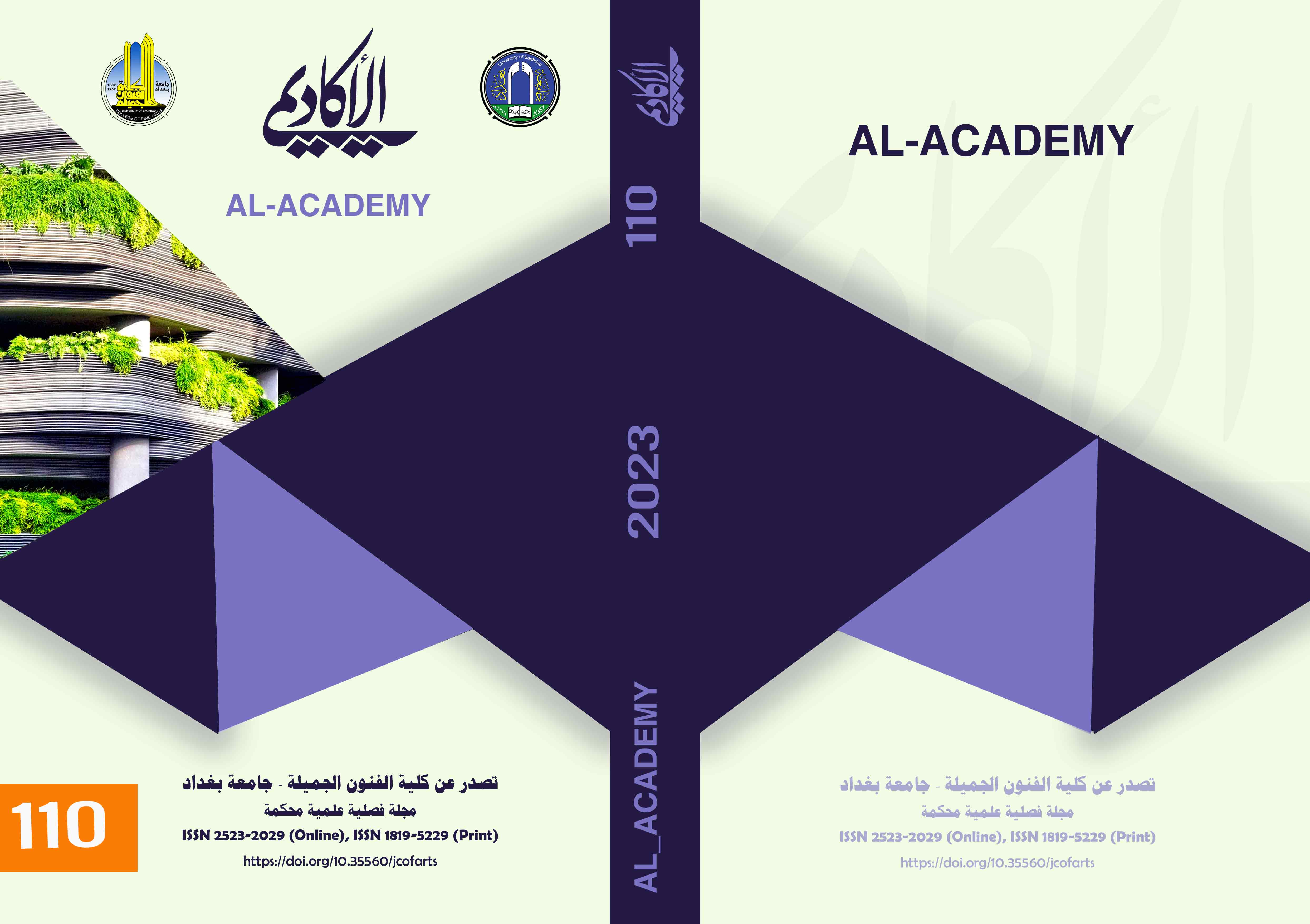Nightmarish Traits in psychological film
DOI:
https://doi.org/10.35560/jcofarts1292Keywords:
Psychology, personality, cinemaAbstract
The world of the cinematic image is an artistically and dramatically integrated world, as innovative artistic visions emerge from it according to the secretions of reality containing realistic stories with social and psychological dimensions that develop rapidly and leave their mark on human reality. These events are treated according to the dual function of image and sound, through its concise and rhetorical tools. Which gives the structure of the image a text that is open to interpretation. The image, with its structural and performative capabilities, yearns to express psychological stories with severe and difficult effects, and exciting suffering that led to the tearing apart of the inner inner structures of the character and leaves its mark on reality. The cinematic image embodied those stimuli that led to the revelation of hidden connotations and phenomena that mimic reality. With an expressive artistic vision. Hence, the research problem presented was crystallized in the following question: What are the mechanisms by which nightmarish features operate in psychological films? To achieve the maximum possible benefit by extrapolating opinions to agree with the research objectives, the research therefore included the following topics: Introduction, which included the research problem, its importance, objectives, and limits, and then defining the terms. The importance of the research lies in the fact that it represents a knowledge addition for students of the Department of Cinema and Television at the College of Fine Arts. The objectives of the research were limited to revealing the mechanisms of operation of nightmarish features in psychological films.
As for the theoretical framework, it included two sections, the first dealing with the topic of nightmares in psychology. The second section dealt with the involvement of nightmarish features in the structure of the film. After that, the researcher came up with a number of indicators, which are what resulted from the theoretical framework.
The research also included research procedures that included the research method, the research community, the research tool, and the analysis unit, to be used in analyzing the sample represented by the film (The Book of Blood), so that the research concluded with a set of results and conclusions, the most important of which was the ability of this film to present a discourse based on structures. A complex narrative based on mysterious events that raise fear, anxiety, and horror. As for the conclusions, the film was able, through the work of its artistic systems, to present a nightmarish narrative that expresses fear, anxiety, and horror. The research was then concluded with a list of sources and a summary in English.
References
Abbas, Faisal, Psychoanalysis and Freudian Tendencies, (Beirut: Dar Al-Fikr Al-Arabi), 1996.
Abdel Hamid, Shaker,Conceptual Strangeness and Its Manifestations in Literature, Kuwait: A monthly cultural book series issued by the National Council for Culture, Arts and Letters, 2012.
Abdel-Khaleq, Ahmed Muhammad, Death Anxiety, Kuwait: a monthly cultural book series issued by the National Council for Culture, Arts and Literature, 1990.
Abdul Hamid, Shaker, The Strangeness of the Concept and Its Manifestations in Literature, Kuwait: A monthly cultural book series issued by the National Council for Culture, Arts and Letters, 2012.
Ahmed, Maha Faisal, Structural Features of the Psychopathic Personality in Cinematic Discourse, Baghdad: Al-Academy Magazine, No. 99, 2021.
Al-Ahwani, Ahmed Fouad, Fear, (Egypt: Dar Al-Maaref for Printing and Publishing), 1951.
Al-Khazen, Munir Wahiba, Dictionary of Psychology Terms, (Beirut: University Publishing House), ed.
Al-Razi, Muhammad bin Abi Bakr bin Abdul Qadir, Mukhtar Al-Sahah, (Beirut: Lebanon Library), 1989.
Rizk, Asaad, Encyclopedia of Psychology, Arab Foundation for Studies and Publishing, 1977.
Aweida, Kamel Muhammad Muhammad, Personality Psychology, (Beirut: Dar Al-Kutub Al-Ilmiyyah), 1996.
Freud, Sigmund, Beyond the Pleasure Principle, translated by: Ishaq Ramzi, Dar Al-Ma’arif, 5th edition, (Cairo: Dar Al-Ma’arif), 1952.
Habib, Samuel, Fear, Cairo: Nubar Culture House for Printing, 1989.
Halifi, Shuaib, The Poetics of the Fantastic Novel, (Rabat: Dar Al-Aman Publishing ,2009).
Jassim, Aladdin Abdel Majeed, The Constant and the Transformable in Cinematic Creativity, (Baghdad: Journal of the College of Arts), p. (93).
Julia Cristva, Visual Language and Photography, Younes Amoush, Jeddah Windows Magazine, Seventh Issue, 1999.p)7).
Mahmoud, Asia Ali, the expressive connotations of makeup in the exotic cinematic film, (Baghdad: Al-Academi Magazine - a peer-reviewed quarterly scientific journal, No. 85), 2017.
Murray, Edward. C, Motivation and Emotion, Translated by: Ahmed Abdel Aziz Salama, (Cairo: Dar Al-Shorouk), 1988.
Mohamed Shweika, represents the body in Moroccan cinema, Meknes, Signs Magazine, No. 38, 2012, p 96.
Nagati, Muhammad Othman, Psychological Studies among Muslim Scholars, (Cairo: Dar Al-Shorouk), 1993.
Nasser Building, 'Paul Ricoeur and Interpretation Racings', a study published on the website of the Human Sciences Magazine, sixth year, No. 41, Spring 2009, on the electronic link: www.ulum.nl
Omar, Ahmed Mukhtar, Dictionary of the Contemporary Arabic Language, (Cairo: World of Books for Publishing, Distribution and Printing), Volume 3, 2008.
Saleh, Wafaa Saadi, The movement diversity of the camera in the structure of the cinematographic scene, Baghdad, Al-Academy Magazine, No. 96, 2020.
Sheehan, David F., Anxiety Disease, translated by: Ezzat Shaalan, Kuwait: A series of cultural books issued by the National Council for Culture, Arts and Literature, 1988.
George Figar Yallo, the body and the human self, Ispery Magazine, No. 21, 1986, p. )68(.
Downloads
Published
Issue
Section
License
Copyright (c) 2023 Asia Ali Mahmoud, Alaa El Din Abdul Majeed Jassim

This work is licensed under a Creative Commons Attribution 4.0 International License.













